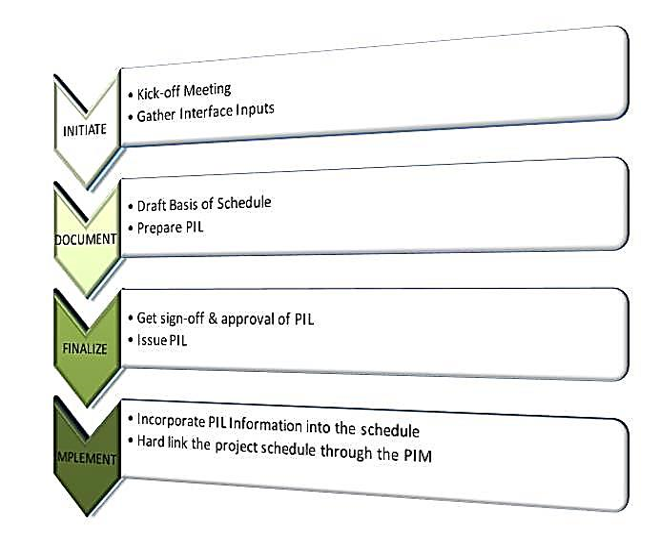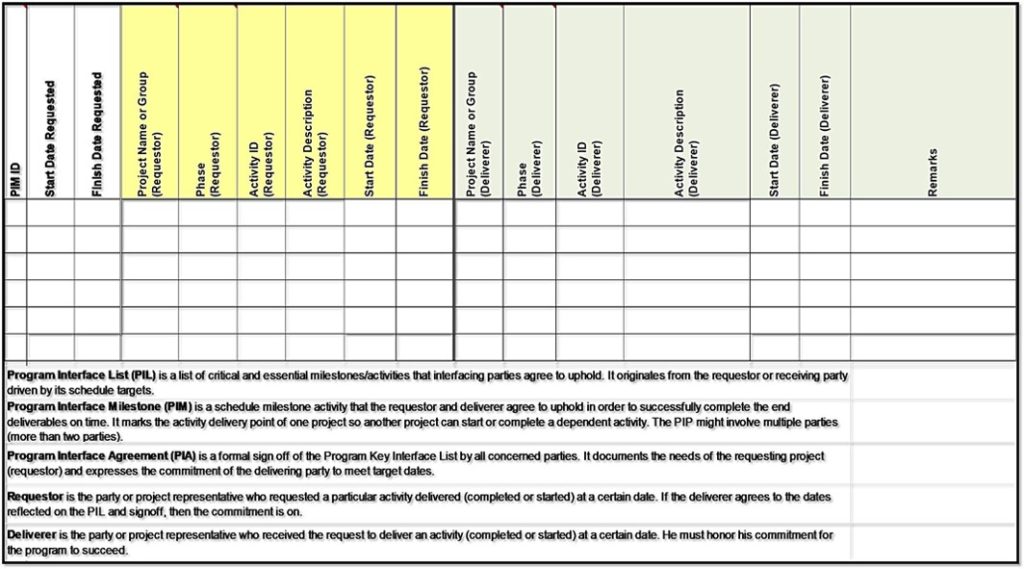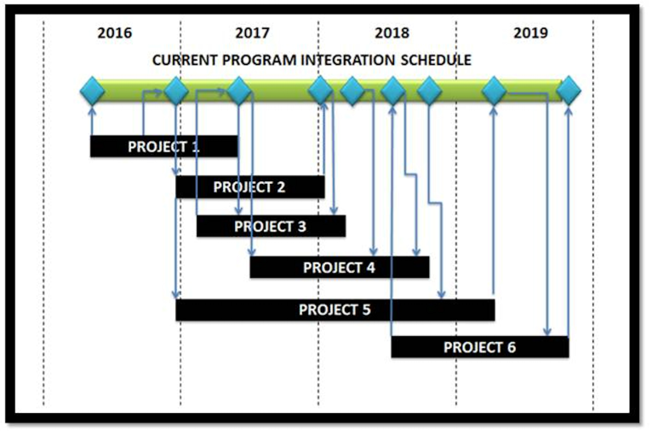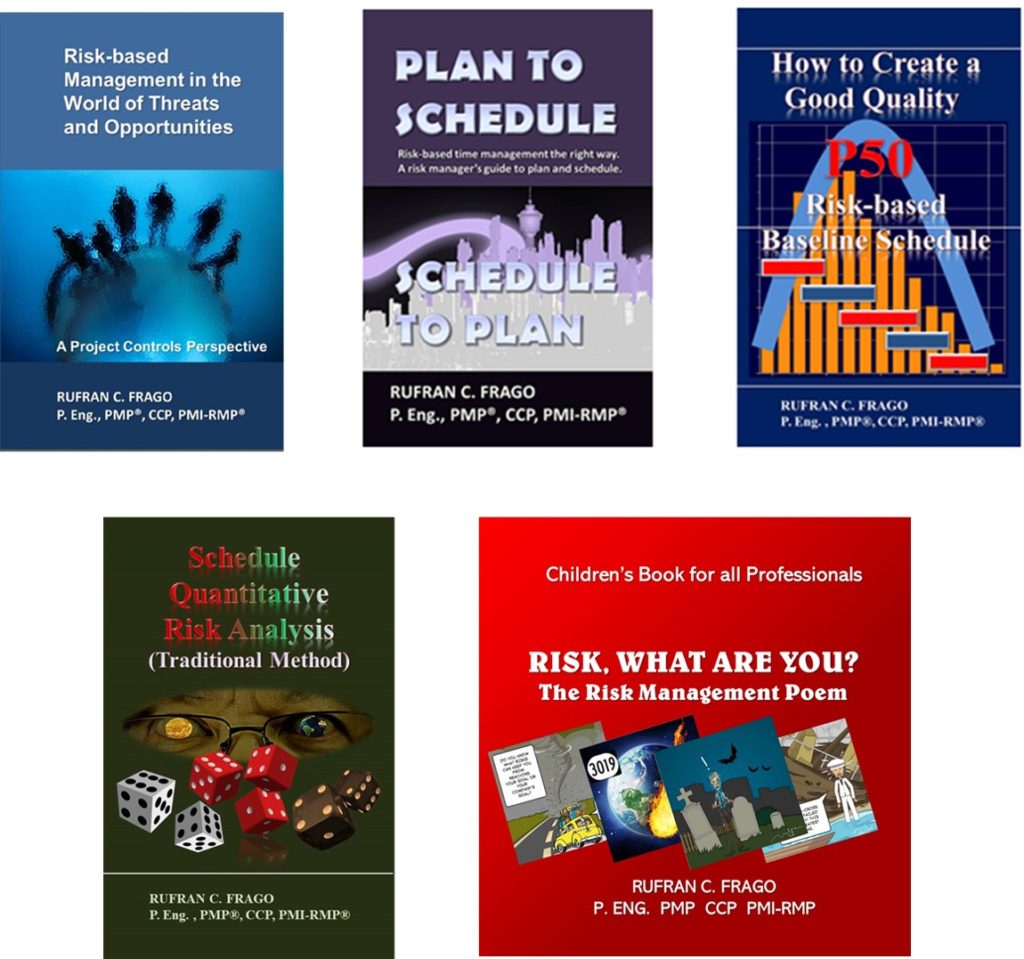
Program management is the process of managing several related projects typically to enhance an organization’s outlook, better its industry reputation, to improve overall productivity and to avail of long-term opportunities. I would like to re-share with you today one of the approaches I’ve formulated and used in achieving Program Schedule Integration.
Management of interdependent multiple projects calls for an integrated approach. Interdependent in a sense that some activities of one project cannot start or finish without the predecessor project activities from another project or supporting group started or completed. For small to medium size program portfolio, effectively managing the overall and overarching schedule can still be quite challenging for Project Managers.
This is especially true for a group of sustaining projects and/or major projects, especially for mega-projects of say, greater than or equal to US$750 Million (Frago, R., 2015.Risk-based Management in the World of Threats and Opportunities). As the size of the projects within the program portfolio increases, the program complexity increases. Note that the integration requirement can add to this complexity if the project is not careful. As the complexity increases, schedule management has to be simplified and must be approached slightly different way.
PROGRAM COMPLEXITY AND SCHEDULING DETAILS
It is a known fact that as things gets complicated, project professionals and managers tends to divide works in more details. Man naturally gravitate to scrutinizing the project specimen into the tiniest details, that even before he realize it, the opportunity has passed and the threat has already occurred. The sad eventualities have eaten to the project’s bottom line.
Details are important if they add values. In order to have value in details, one has to balance it against the intended return and the prevailing situation. If the client wants to leverage a contractor’s planning and scheduling expertise, then it would be better for the client representatives to stick to a corresponding higher level of schedule to monitor and control progress.
It is a given that to counteract complexity, the project has to simplify some of its processes and requirements and still achieve the goals. This will entail the use of key interface approach and the proper control of schedule details.
FULL INTEGRATION OF PROGRAM SCHEDULE
To achieve full program schedule integration, the project must use logical hard links between projects. It is the only effective way to ensure that calculation of critical path across the projects in the program is reliably possible.
Program managers have to find a method of doing away the time-consuming collection of data by offering a common database of information and the same scheduling environment with “what you see is what you get” quality. Without such interface relationships crossing individual project schedules, a fast and accurate identification of critical work becomes manual, tedious, and lengthy if not impossible.
Using and maintaining a key interface milestone table (flat file) like Excel outside the live schedule introduces another tool, another application. It waste time and delays a quick turn-around to decision making (Frago, R. 2013.Mega-projects Schedule Integration and Management\Slideshare).
We have to remind ourselves that using a separate application is like managing the overall program schedule using two versions of the truth. If a project person will only think a little deeply about it, it can be a counter-productive and dangerous proposition.
PROCESS SUMMARY
In summary, the Program Schedule attains integration through the following processes and steps (see Figure 1).
1) Initiate
- Identify contacts (stakeholders)
- Discuss the initiative with leaders
- Set expectations
- Engage team individually and in group
- Hold a kick-off meeting with all group representative present
2) Document
- Always take notes
- Provide regular feeds to the leaders (clients)
- Develop/Draft the basis of integration (basis of integrated schedule)
- Develop/Prepare Program Interface List (PIL)
3) Finalize
- Finalize PIL
- Get all major party stakeholders to sign-off
- Issue final PIL
- Issue final BOS (basis of integrated schedule)
4) Implement
- Incorporate PIL information into the Program Integration Schedule or Program Interface Schedule. Note that the two can be used interchangeably. We will try to stick and use the former more in this article.
- Tie the individual projects in the program through the corresponding Program Interface Milestones (interface activities)
- Test to check:
- Soundness of logical sequence
- Program Schedule quality
- Degree of integration: Loose or tight?
- Schedule calculation accuracy: Dates, Floats, cascades, critical path, etc.
- If it meets reporting requirements
- If output meets client’s expectations

Figure 1: Program Schedule Integration Process
TOOL OF CHOICE
Primavera Project Management V6.1, 6.2, 6.7 SP5 or higher
ACRONYMS AND DEFINITIONS
Program Interface List (PIL) is a list of critical and essential milestones/activities that interfacing parties agree to uphold. It originates from the requestor or receiving party driven by its schedule targets (Figure 3).
Program Interface Milestone (PIM) is a schedule milestone activity that the requestor and deliverer agree to uphold. Responsibly upholding the commitments will successfully complete the individual schedule and the whole program on time. It marks the activity delivery point of one project so another project can start or complete a dependent activity. The PIP might involve multiple parties (more than two parties).
Program Interface Agreement (PIA) is a formal signoff of the Program Interface List (PIL) by all concerned parties. It documents the needs of the requesting project (requestor) and expresses the commitment of the delivering party to meet target dates.
Requestor is the party or project representative who requested a particular activity delivered (completed or started) at a certain date. If the deliverer agrees to the dates reflected on the PIL and signoff, then the commitment is on.
Deliverer is the party or project representative who received the request to deliver an activity (completed or started) at a certain date. He must honor his commitment for the program to succeed.
HOW TO ACCOMPLISH THE PIL FORM
Accomplishing the Program Interface List depends on the inputs provided by the individual project through their project leads. The PIL form is the tabulation used to collate the information from all the parties (projects). Accomplishing the form is not difficult as shown on the illustration below (Figure 2).

Figure 2: Program Interface List (Form/Template)
The PIM ID gives the interface milestone a unique tracking number preceded by a prefix PIM; say PIM-18. Its description is practically hinged to the activity description of the deliverer activity. The PIM description can therefore take a similar description or a description describing the culmination of the activity. If the deliverer’s activity is “Excavation of Area 9”, PIM description can be “Excavation of Area 9 complete.”
In this case, the deliverer activity is “Set last module.” The PIM description can take the same description but adding the word “Complete”; i.e. “Last Module Setting Complete” or simply “Last Module Set.” The requestor activity is the successor activity “Transfer Super Crane to Area 2.” This activity immediately follows the PIM and then drives some other activities like “Lift and set Module 1 (Area 2).”
Note that the Requestor Dates are dates that the PIM successor activity currently has in their schedule. On the other hand, the Deliverer’s Dates are the dates that the PIM predecessor activity has in their schedule. The Requested Dates found on the PIM columns points to the dates that the requestor project or group wants from the Deliverer project or group.

Figure 3: Program Interface List (Accomplishing the Form)
The Project Name or Group column contains the project name of the deliverer or requestor as described in the preceding paragraph. It can also contain the name of the support group or externally based stakeholders such as Regulatory Compliance, Environmental, Health and Safety, or any Government Bureau at play.
After sign-off, approval, and issuance of the PIL, commitments are deemed in place. This is followed by the approval and issuance of the Basis of Schedule, and the Program Integration Schedule (Program Interface Schedule) Baseline.
Upon issuance of the official baseline, the Program Integrated Control Schedule is born. Routine monitoring and control starts after the first update.
Program Integration Schedule (PIS)
The PIS is the final destination of the Program Integration List (PIL). Approved and signed-off interface milestones are loaded up the PIS. The pertinent and relevant activities of individual projects included in the program touches the corresponding milestone (Figure 4).
An activity can be a predecessor of the PIM or a successor. A deliverer represents the project responsible to deliver the activity described by the PIM. The requestor represents the project requesting the delivery of the activity described by the PIM. The committed date is of the essence.

Figure 4: Program Integration Schedule (PIS) Schematic
Ground Rules
Ground rules of schedule integration using Interface Milestones (often times referred to as KIMs or key interface milestones).
- The interface point is requested by the project who needs it and committed to by the delivering project (or support group)
- A key milestone that supports work or phase continuance in the same project is not part of the program interface list.
- A relationship line/s must cross project boundary into another project within the program. The deliverer and the requestor should not be the same.
- All links between projects are coursed through the integration (interface) schedule using the interface milestones
- No direct links between projects
- Each project must have a separate Project ID and project file which are updated semi-independently
- All projects included in the program must have the same update cycle
- All projects must have the same data date before calculating the schedule (F9) to derive critical path and float
- PIL must be signed/approved before they find their way into the Program Integration Schedule in P6
- This is important in demonstrating and establishing commitments. This is also to avoid reworking the schedule.
- High level flags and indicators can be incorporated into the Program Integration Schedule but they are not to be regarded as part of the PIL.
- The Program Integration Schedule is an interface milestone schedule that pulls all the projects in the program together. It is a bridge between projects and cannot exist by itself.
Source:
Frago, R. (2015).Plan to Schedule, Schedule to Plan (Draft Manuscript)\Section 13: Program Schedule Integration.page 230 to 237. ISBN 978-0-9947608-2-1 (Canada)
Rufran C. Frago, PMP, P. Eng., PMI-RMP, CCP, Author (012016)
About the Author:
Rufran C. Frago is the Founder of PM Solution Pro, a Calgary consulting, product, and training services firm focusing on project and business management solutions. He is passionate providing advice, mentorship, education and training through consultation, collaboration, and what he uniquely calls, student-led training.
BOOKS AUTHORED BY RUFRAN FRAGO
- Risk-based Management in the World of Threats and Opportunities: A Project Controls Perspective.ISBN 978-0-9947608-0-7.Canada
- Plan to Schedule, Schedule to Plan.ISBN 978-0-9947608-2-1.Canada
- How to Create a Good Quality P50 Risk-based Baseline Schedule.ISBN 978-0-9947608-1-4.Canada
- Schedule Quantitative Risk Analysis (Traditional Method).ISBN 978-0-9947608-3-8.Canada
- RISK, What are you? The Risk Management Poem: Children’s Book for all Professionals.ISBN 978-0-9947608-4-5 (Canada)

